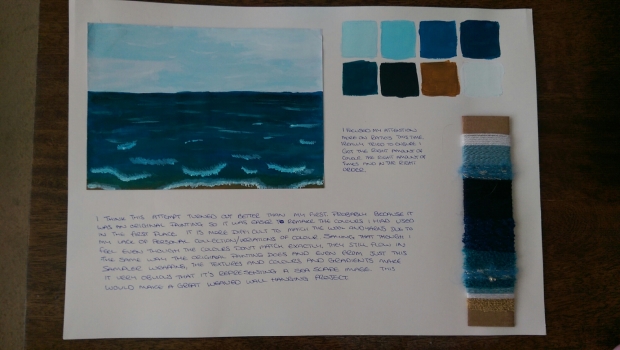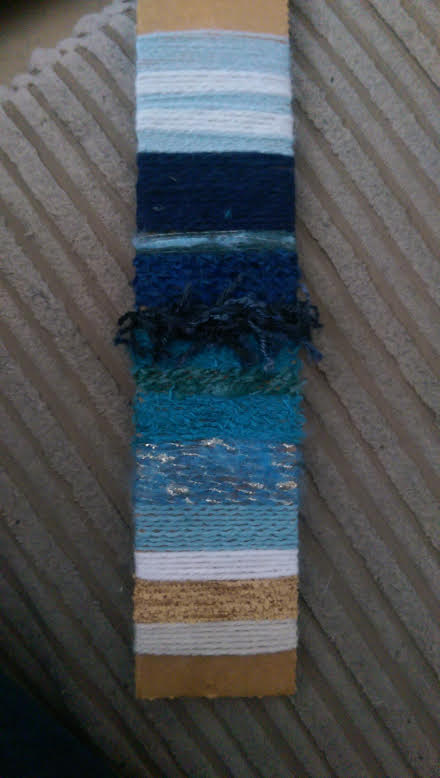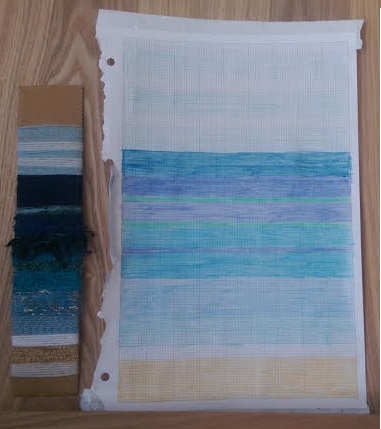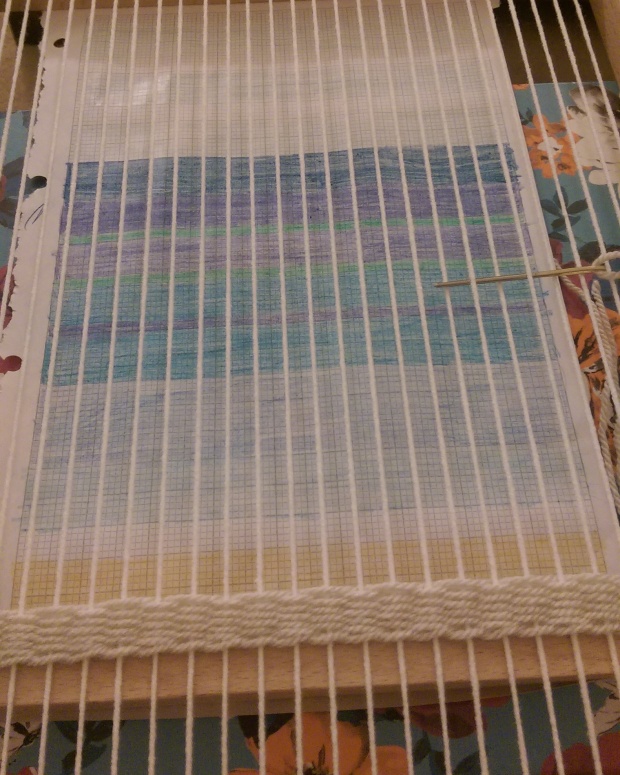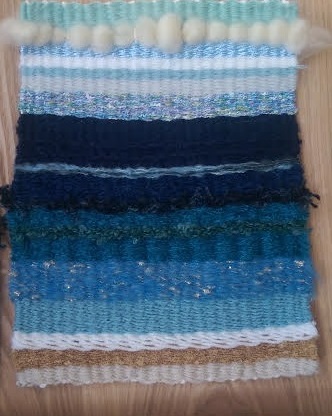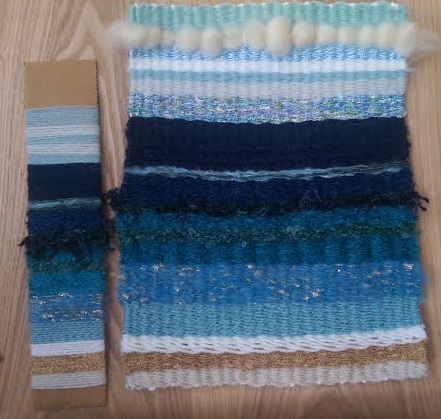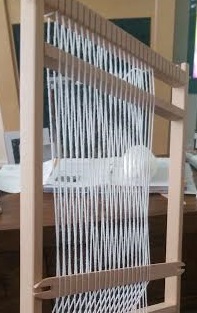Level 4 critical assessment – Looking for laying the foundations – acquisition of skills and good working habits (keeping sketch books and learning logs) – 4 areas of focus: Demonstration of technical and visual skills, quality of outcome, demonstration of creativity and context.
Demonstration of technical and visual skills – I think I have been very competent in this area. I think I have displayed a good understanding of the different techniques we were asked to play with and have produced some visually and texturally effective designs
Quality of outcome – I am very pleased with the quality of my work. I think I have finished most pieces to a good standard. I believe I could research some more professional finishes for future samples, especially if I decide to use it in my final project but given the assignment brief, I feel I have done very well.
Demonstration of creativity – I think I have shown a good level of creativity. From looking at my last assignment work and sketchbooks I feel I have been a bit more adventurous with my sketches and sketchbook work, although I still don’t play with different mediums like collage or anything a lot which I always reflect and feel disappointed about but I tend to do my sketches at work on breaks or when I find a free minute between jobs which doesn’t leave me with a lot of experimental time. But saying this, I am starting to work in my Theme Book now and I have had a few ideas I would like to try out using stitch and collage so I hope that this changes for the next assignment.
Context – I feel that I have really progressed in this area throughout this assignment. I have been inspired to look at other work and try to be critical and objective and really think about what I am seeing when viewing other artists work. I have always been a little scared of research as I have never found it my strong point. I’m quite easily distracted and I always feel overwhelmed when doing a research point as I feel I never know where to start in the vast amount of information that is available on the internet and things and I think that scares me a little. I have also found myself reading more of the suggested and essential reading materials that we were told to look at. I haven’t had enough time to finish books lately but I have started to read and I find myself really enjoying the books that we were told to look at. I hope to finish some of these over the coming months (currently reading: The Textiles Book & Textiles Today)
Feedback – Level 4 – Overall I am very happy with the work I have produced for this assignment. I feel I have shown a great progress of development, especially with the seascape picture I originally did as a sketch then developed with pencil, watercolours, acrylic and finally as my main sample piece for the weaving. I also feel my general sketches and the samples I have produced look great and I feel I have experimented very well with them. This is the first assignment that I feel I have put in my full potential and I have really enjoyed doing this work. I really enjoyed learning to weave too. I do feel like I have found a true passion and calling in this and really look forward to producing some more samples and hopefully using this in my final piece of work.
